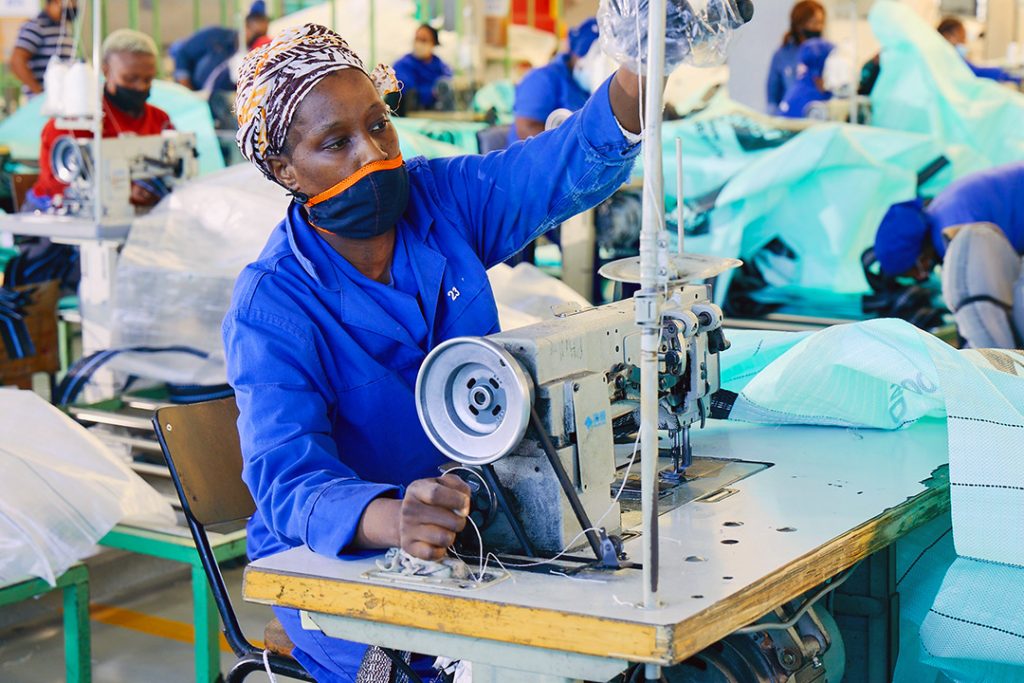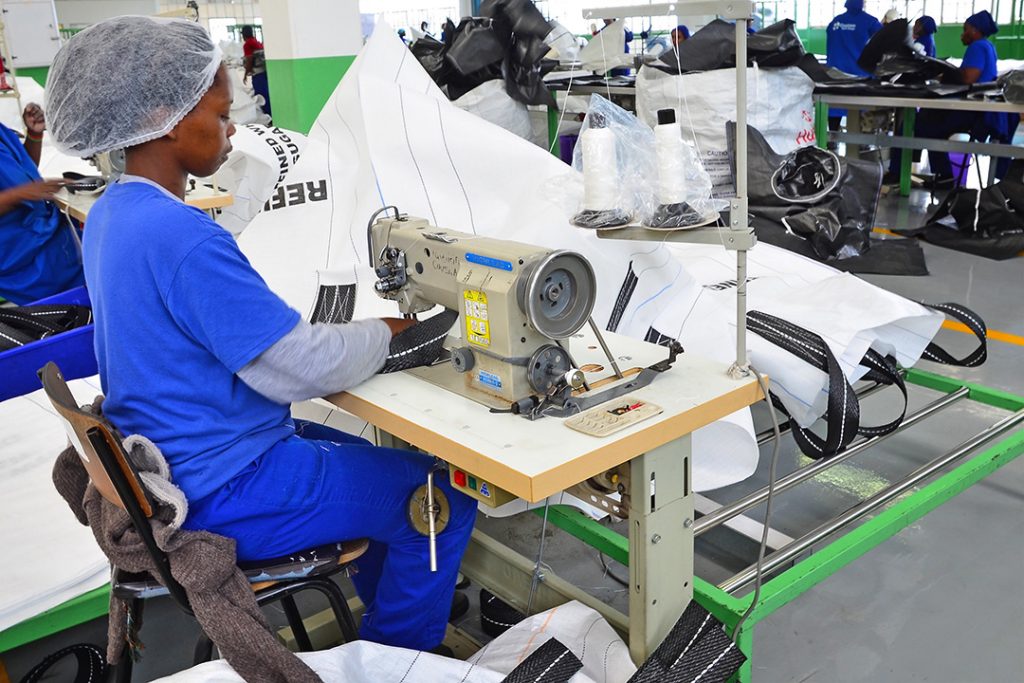You may wonder how much a bulk bag costs and how certain optional extras may affect this price. Since these bulk packaging products are highly customisable, their costs can vary depending on the specifications required. Purchasing managers will always compare prices to find the best deal without compromising on quality and reliability, so this guide will shed some light on how bulk bag costs are derived.
Custom Bulk Bags is a leading manufacturer and supplier of bulk bags in South Africa. We produce up to 3.5 million bulk bags per year; all of which have a minimum safety factor rating of 5:1 and are manufactured in accordance with international regulations and standards. Our high-quality packaging products are used throughout Africa in a number of industries.

Basic bulk bag components
There are numerous components that constitute the basic price of a simple bulk bag, such as raw materials, factory equipment costs, direct labour, logistics and overheads. The largest components of these costs are the raw materials, including the fabric, webbing and sewing thread. Many of these materials vary in price depending on the current oil and gas prices as they are made from polymers and plastic resins.
Bulk bag manufacturing is a labour-intensive process that requires skilled seamstresses and machinery operators. In a typical production line, 10 to 20 people will be involved with cutting, stitching, quality control and packing. The wages of employees also affect the cost of bulk bags.
Logistics is another factor to consider for the basic costs of a bulk bag. Transporting the packaging products from the factory to the customer can involve long distances by road, rail, air or sea. Luckily, empty bulk bags are extremely lightweight and can be folded up to maximise space savings. This helps to reduce logistics expenses, but still factors into the final price of the bulk bags.
Manufacturing overheads are the final basic cost that needs to be considered. These include equipment and building maintenance costs, utilities (electricity, water, waste removal etc.) and factory management costs. Understanding these production variables and the overall impact they have on quality is important when sourcing affordable bulk bags.

Customisation and design costs
Once the basic costs have been determined, you then need to factor in the costs of the additional components and design changes for each bulk bag. There are numerous parameters that need to be considered here:
- Bulk bag type – There are four main types of bulk bag that each determines the final cost. The cheapest design is a circular bag, followed by U-panel, 4-panel and, finally, baffled bulk bags being the more costly design.
- Bulk bag size – Next, the size of the bulk bag is an obvious cost factor. The bigger the bag, the more material is needed.
- Fabric weight – The heavier the fabric, the better the quality but also the more expensive the bulk bag.
- Fabric type – The fabric types get more expensive from Type A to Type D.
- Coating – Uncoated bulk bags are obviously cheaper than coated ones.
- Safe working load (SWL) – This is a function of fabric weight, so as the SWL increases, so too does the weight of the fabric and the cost of producing it.
- Top closures – An open-top bulk bag is the most affordable, followed by a spout top then a duffle top. The price is also determined by the size of the spout.
- Bottom closures – A flat-bottom bulk bag is the cheapest, followed by a spout discharge then a full-bottom discharge. Again, the price is determined by the size of the bag.
- Seams – Standard seams are the cheapest; sift-proof seams add to the cost.
- Lifting loops – The size and arrangement of the lift loops will affect the price of the bulk bag.
- Inner liners – The thickness, colour, insertion technique and material of inner liners will also affect the price.
- Document pouches – These optional extras can be a standard open pouch or a zip-lock pouch. The more you have on a bag, the more costs will be incurred.
- Grading – The grade of a bulk bag will determine its cost. Industrial-grade bags are the cheapest, followed by food-grade and then pharmaceutical-grade.
These customisation and design components will be tallied up by your bulk bag manufacturer to give you an accurate quote for the costs of manufacturing your perfect bulk bags. A good supplier will offer in-depth consultations throughout the specification and ordering processes to ensure that you receive high-quality packaging products that meet your specific needs. For more information about our bulk bags, please contact us today.
___
Custom Bulk Bags is a leading South African manufacturer of woven polypropylene bags for various industries, such as mining, chemicals and food. We are able to produce over 3.5-million bulk bags per year, keeping our customers in stock at all times. Our bags adhere to the highest levels of quality as a result of our stringent in-house testing and quality control programmes.
Custom Bulk Bags holds ISO 9001 certification and we currently have a number of UN-certified designs. We are a Level 2 B-BBEE manufacturer and supplier and fall under the ownership structure of Deneb Investments Limited. For more information on our products, contact sales@custombulkbags.co.za. Follow us on Facebook for our latest news and industry insights.

